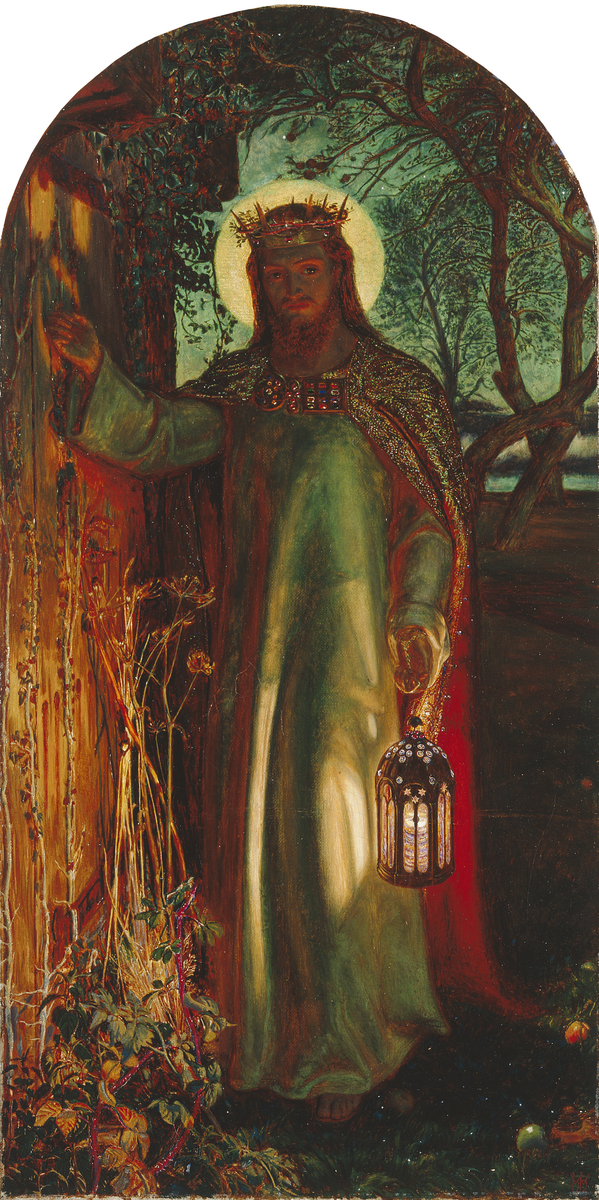The allegorical painting “The Light of the World” was seen by millions on its 1904 world tour.In its heyday in the early 20th century, the painting “The Light of the World” (1851-53) was probably more famous than any of the works of the great masters of the Renaissance. As difficult as it is to imagine today, millions of people around the world flocked to see what was known as the “sermon in a frame.”
The allegorical painting that captured the imagination of so many was created by the English artist William Holman Hunt, who began the work at the age of 21 and finished it when he was 29. The painting illustrates the biblical passage in Revelation 3:20:
“Behold, I stand at the door and knock. If anyone hears my voice and opens the door, [then] I will enter his house and dine with him, and he with me.”
Jesus, carrying a lantern, is depicted knocking at a door with no handle on the outside. The door is overgrown with weeds, and the nails and hinges are rusted, implying that the door has never been opened.
The message: it is up to the person on the other side of the door to let Jesus in.

Known for going to great extremes to pursue the subjects of his art, Hunt traveled to the Holy Land to capture the painting’s moonlit effect. According to his biographer Jeremy Maas, Hunt “accepted the risk of disease, and triumphed eventually over incomprehension (painting a townscape of Jerusalem, he was accused of peeping over a neighbor’s wall at his wives), financial anxieties, and long and arduous journeys through lawless territories with understandably frightened servants whose spirits he was obliged to revive by dancing like a dervish.”
Upon completion, the painting was sold and later donated to Keble College at Oxford University, which soon began charging a fee to view it. Inspired by the popularity of his work, Hunt painted another version between 1851 and 1856, which is on display at Manchester City Art Gallery, England, and is reproduced in this article.
Fifty years later, Hunt set to work on a larger version of the painting, which was completed in 1904 with the assistance of the artist Edward Robert Hughes.
The painting went on a world tour from 1905 to 1907, visiting the hometowns of millions of people in Canada, South Africa, and beyond. On its tour of Australia, it’s estimated that 4/5 of the population of the country saw it. The industrialist Charles Booth purchased the painting from Hunt and Hughes and donated it to St. Paul’s Cathedral in London where it hangs today. According to St. Paul’s, the painting is “the most traveled art work in history.”








